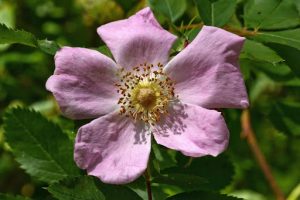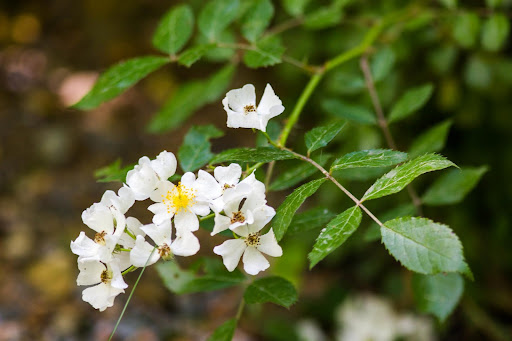Multiflora Rose is a woody shrub that grows up to 3 m tall and 4 m wide. Its stem is green to red with stiff, curved thorns. Leaves are compound, with 5–11 oblong, oval leaflets with serrated edges. The upper surface of the leaves is smooth, while the underside is paler with short hairs. Flowers are white to pinkish, 1.3–2 cm wide, appearing in clusters at the end of branches, and blooming in late May through June. Rosehips are small – 6 mm or less – and green to bright red.
Multiflora Rose invades a variety of environments. It can grow, for example, in open woodlots, forests, marshes, swamp edges, and in disturbed areas. It is often found in hedgerows, gardens, and along trails. It prefers locations with full sun, but can tolerate moderate shade. It is able to outcompete most native plants, and reduces biodiversity in habitats where it establishes.
Multiflora Rose was brought to northeastern North America as an ornamental plant in the late 1800s and early 1900s.
Virginia Rose (Rosa virginiana) is a beautiful native species, and sometimes considered the best all-around wild rose, with attractive flowers and excellent fall colours.


Multiflora Rose was once planted in highway medians to reduce oncoming traffic headlight glare. In addition, due to its rapid and dense growth, it acted as a natural crash barrier to help stop out-of-control vehicles!
Promote the use of attractive, native roses for gardens and landscaping. Dig out, mow, or uproot plants. Refer to the Multiflora Rose Best Management Practices document for management options. If you spot this invasive species, report the location to iNaturalist, or directly to the NSISC.